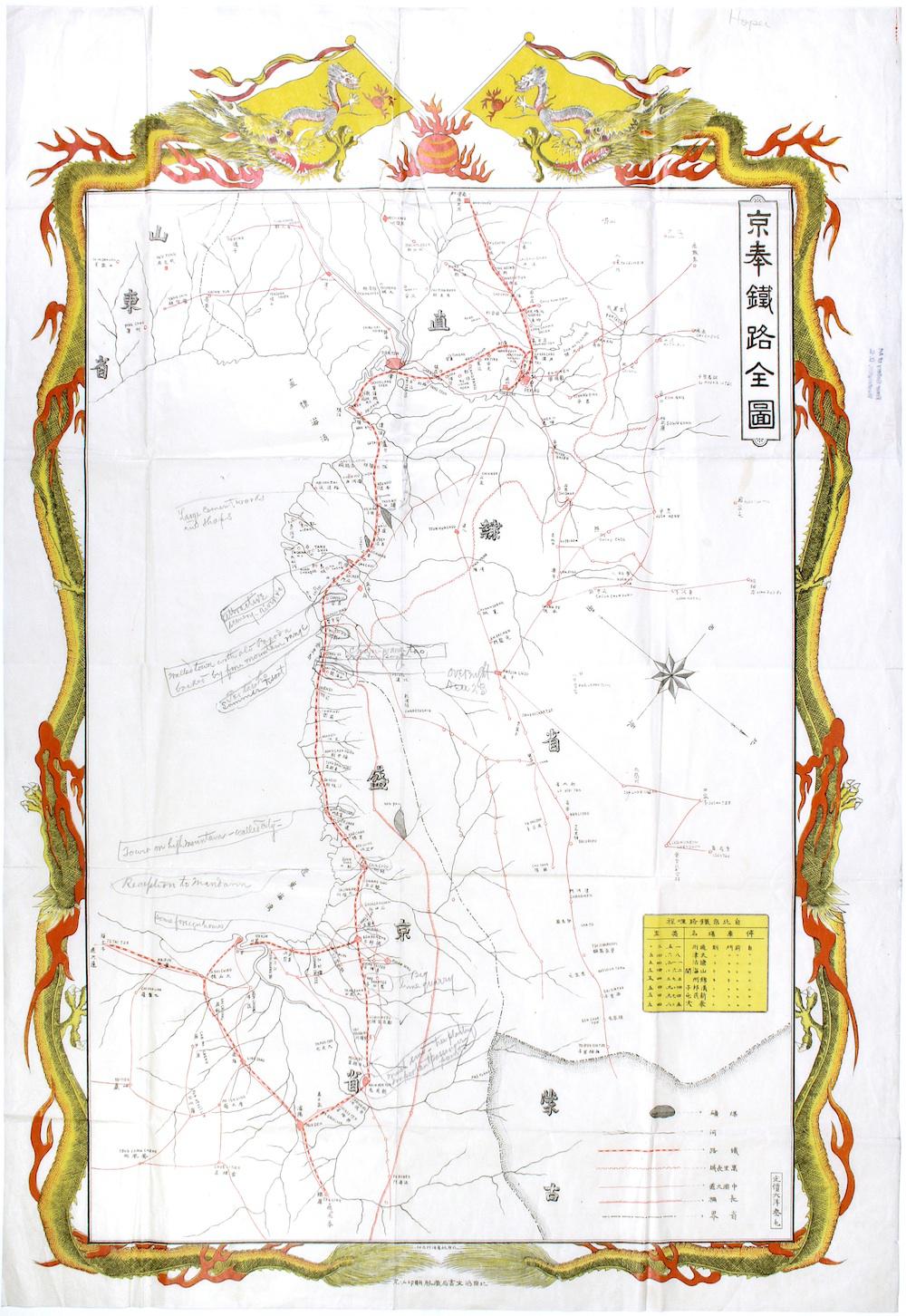The Vault is Slate’s history blog. Like us on Facebook, follow us on Twitter @slatevault, and find us on Tumblr. Find out more about what this space is all about here.
This railroad map, annotated in 1910 by industrialist and art collector Charles Lang Freer, tracks the American’s travels along the new Beijing-Fengtian Railway.
As historian Madeleine Yue Dong writes in her history of Beijing, for years after the technology was available, traditionalist factions within the Qing Dynasty resisted the construction of railways. The tide turned in the early 20th century, when parts of the ancient city’s walls were torn down to accommodate trains. The Beijing-Fengtian Railway was under construction for 27 years before finally opening in 1907.
Freer, who accumulated his own fortune by founding a Detroit company that manufactured railroad cars, had long retired by the time he took this trip. Suffering from neurasthenia, he withdrew from business at the turn of the century and became a collector specializing in Chinese and Japanese art.
His 1919 New York Times obituary quotes Freer on the importance of personal travel to his collecting strategy:
I went far into the interior of China and found many splendid examples of [ancient paintings], some owned by private collectors, others in the hands of people who had no idea of their value.
Freer’s annotations on this map seem meant to help the traveler remember points of interest. Freer marked the places where he stayed overnight, noted locations of especially pleasing scenery (Chang Li: “Walled town with old Pagoda backed by fine mountain range”), and recorded locations of industrial activity (Kao Shantze: “Big lime quarry”).
Freer marked up this map on his last trip to Asia. He suffered a stroke the next year and never returned. The collector donated his hoard to the Smithsonian and endowed the fund that built the institution’s Freer Gallery of Art.
Click on the image below to reach a zoomable version.

Charles L. Freer Papers, Freer Gallery of Art and Arthur M. Sackler Gallery Archives, Smithsonian.